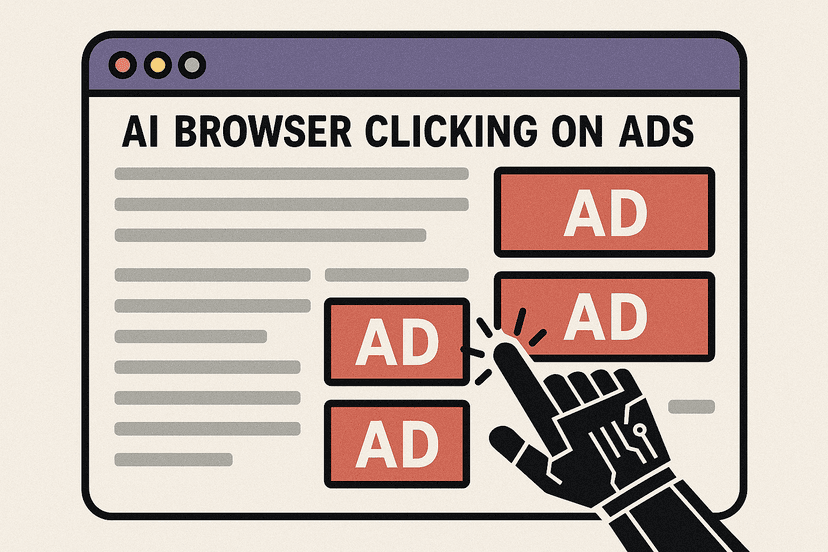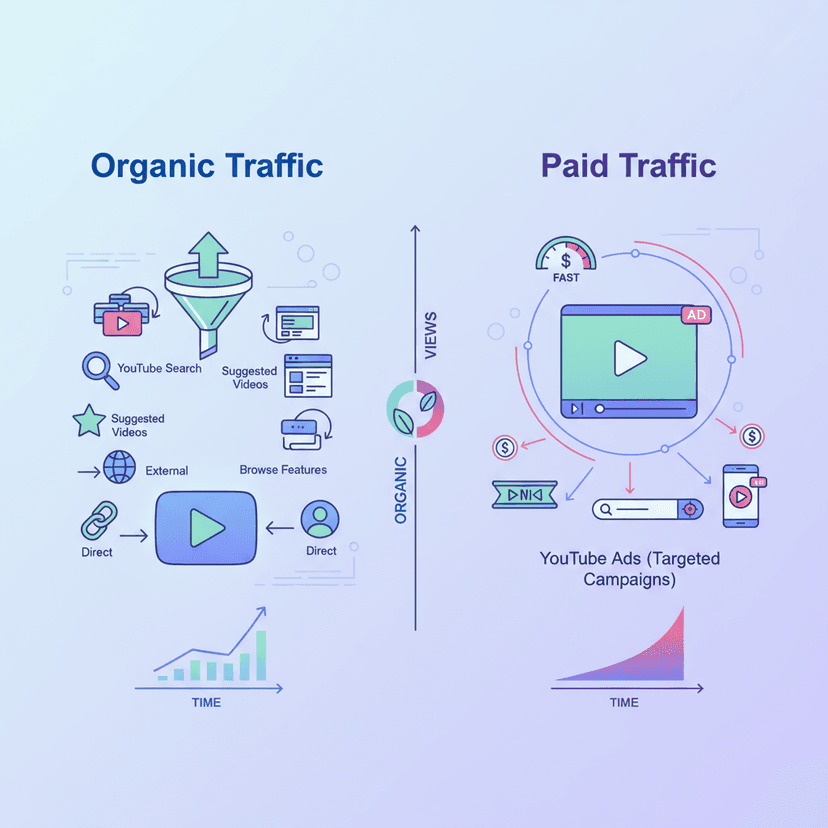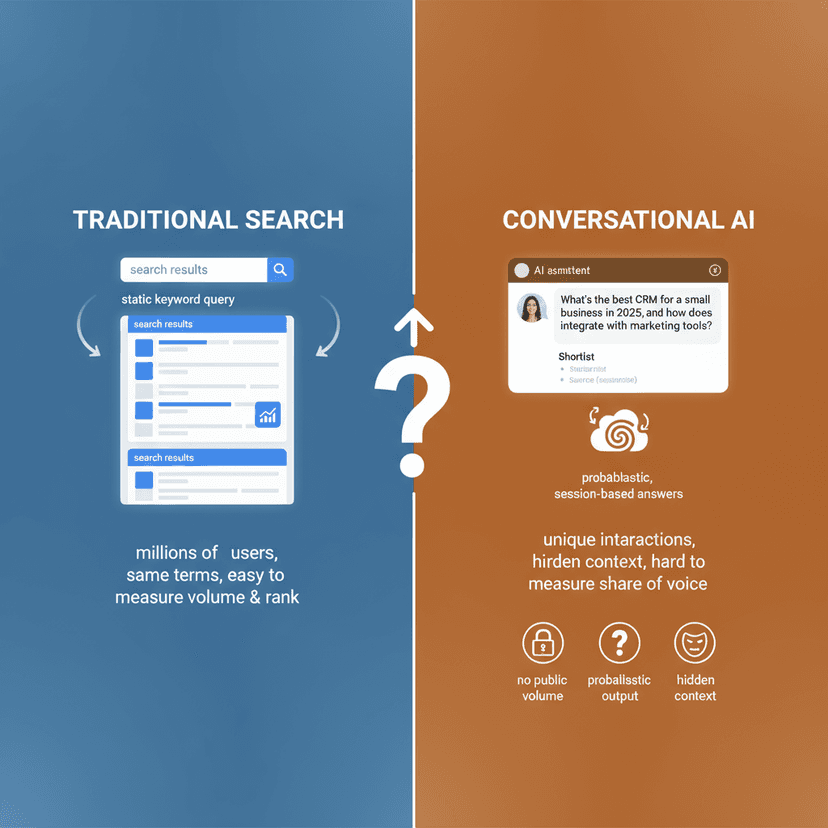Introduction
In today’s digital-first business environment, creating an effective digital marketing budget is more critical than ever. Whether you’re a small business owner, a marketing director at a mid-sized company, or part of a large enterprise marketing team, determining how much to allocate to your digital marketing efforts can be challenging. The digital landscape is constantly evolving, with new platforms emerging and consumer behaviors shifting, making budget planning a complex but essential exercise.
A well-planned digital marketing budget isn’t just about setting aside money for advertisements and campaigns. It’s a strategic document that reflects your business goals, target audience preferences, competitive landscape, and expected return on investment. It serves as a roadmap for your marketing activities throughout the year and provides a framework for measuring success.
This comprehensive guide will walk you through everything you need to know about creating, implementing, and optimizing your digital marketing budget. From understanding the various digital marketing channels to calculating appropriate allocations, avoiding common budgeting mistakes, and measuring the return on your marketing investments, this article aims to equip you with the knowledge and tools necessary to make informed budgeting decisions.
Whether you’re crafting your first digital marketing budget or looking to refine your existing approach, the insights and strategies shared in this guide will help you maximize your marketing dollars and achieve better results for your business in the increasingly competitive digital marketplace.
Why Having a Digital Marketing Budget is Essential
Creating a dedicated digital marketing budget is not just a financial exercise—it’s a fundamental business necessity in today’s digital marketplace. Let’s explore why having a well-structured digital marketing budget is crucial for business success.
Strategic Direction and Focus
A defined budget forces you to think strategically about your marketing efforts. Without a budget, it’s easy to scatter your resources across too many channels or campaigns, resulting in diluted efforts that don’t generate meaningful results. A budget requires you to prioritize initiatives that align with your business goals and have the highest potential for return on investment.
When you have limited resources (as all businesses do), a budget ensures that you’re allocating funds to the marketing activities that matter most. This strategic focus is especially important in digital marketing, where there are countless platforms, tactics, and opportunities competing for your attention and investment.
Predictable Business Operations
A digital marketing budget creates predictability in your business operations. When you know how much you’re planning to spend on marketing each month or quarter, you can better forecast your overall business expenses and cash flow. This predictability is essential for sustainable business growth and financial stability.
Additionally, a structured budget helps you plan your marketing activities in advance. Instead of making ad hoc decisions about when and where to spend your marketing dollars, you can develop a cohesive plan that aligns with your business calendar, seasonal trends, and promotional schedules.
Performance Measurement and Accountability
One of the most significant advantages of digital marketing is its measurability. Unlike traditional marketing channels, digital platforms provide detailed analytics that allow you to track the performance of your marketing efforts. However, these metrics are most valuable when you have a budget to measure against.
A digital marketing budget establishes a benchmark for assessing your return on investment (ROI). It enables you to calculate key performance indicators like customer acquisition cost (CAC), lifetime value (LTV), and marketing ROI. These metrics help you understand which marketing activities are delivering the best results and which might need adjustment or elimination.
Moreover, a budget creates accountability within your marketing team or agency relationships. When everyone knows how much is allocated to specific channels or campaigns, they can be held responsible for delivering results proportionate to the investment.
Adaptation to Market Conditions
The digital landscape is constantly changing, with new platforms emerging, algorithms updating, and consumer behaviors evolving. A well-structured budget gives you the flexibility to adapt to these changes while maintaining financial discipline.
By regularly reviewing your budget against performance metrics, you can identify shifts in effectiveness across different channels. This ongoing assessment allows you to reallocate funds from underperforming areas to more promising opportunities—without blowing your overall marketing spend.
Competitive Advantage
In competitive markets, having a strategic approach to your marketing spend can provide a significant advantage. While competitors might be haphazardly throwing money at the latest marketing trends, a business with a thoughtful budget can make more efficient use of its resources.
A budget also forces you to research and understand industry benchmarks for marketing spend. This knowledge helps ensure that you’re investing enough to remain competitive without overspending relative to potential returns.
Business Growth and Scaling
As your business grows, your marketing needs and opportunities will evolve. A well-designed budget framework makes it easier to scale your marketing efforts in proportion to your business growth. When you understand which marketing channels deliver the best ROI, you can confidently increase investment in those areas as your revenue expands.
Additionally, a documented budget history provides valuable data for future planning. By analyzing past performance, you can make more informed decisions about how to allocate resources as your business enters new markets or launches new products.
A thoughtful digital marketing budget isn’t merely a financial constraint—it’s a strategic tool that enables more effective marketing, better business planning, and sustainable growth. In the following sections, we’ll explore how to create and implement this essential business framework.
Understanding Digital Marketing Channels
Before allocating your digital marketing budget, it’s essential to understand the various channels available and how they can contribute to your overall marketing strategy. Each channel has its own strengths, weaknesses, cost structures, and ideal use cases. This knowledge will help you make informed decisions about where to invest your marketing dollars for maximum impact.
Search Engine Optimization (SEO)
SEO is the process of optimizing your website and content to rank higher in organic (non-paid) search engine results. Unlike paid advertising, SEO doesn’t require ongoing media spend, but it does involve investment in technical optimization, content creation, and link building.
Cost Considerations: SEO typically requires either hiring in-house specialists or engaging an agency, with costs ranging from a few hundred to several thousand dollars monthly, depending on the competitiveness of your industry and the scope of work. While SEO doesn’t have direct per-click costs, it does require consistent investment in content creation and technical improvements.
Best For: Businesses looking to build sustainable, long-term traffic channels. SEO is particularly valuable for companies with longer sales cycles where prospects conduct significant research before purchasing.
Budget Impact: SEO is usually considered a long-term investment. Results can take months to materialize, but the effects are often more lasting than paid advertising. Many businesses allocate 20-30% of their digital marketing budget to SEO Thailand.
Search Engine Marketing (SEM) / Pay-Per-Click (PPC)
SEM refers to paid advertising on search engines, most commonly through platforms like Google Ads or Bing Ads. Advertisers bid on keywords relevant to their target audience and pay when users click on their ads.
Cost Considerations: PPC costs vary dramatically by industry, with highly competitive sectors like insurance, legal services, or finance commanding higher costs per click (sometimes $50+ per click). Less competitive industries might pay just a few dollars per click. Your budget needs will depend on search volume, competition, and your customer lifetime value.
Best For: Generating immediate traffic and capturing high-intent searches. PPC is particularly effective for businesses with offerings that solve immediate needs or have high-value conversions that justify the click costs.
Budget Impact: PPC can consume a significant portion of a digital marketing budget due to its direct costs. Many businesses allocate 30-40% of their digital marketing budget to Google Ads, especially in the early stages of building their online presence.
Social Media Marketing
Social media marketing encompasses both organic content creation and paid advertising across platforms like Facebook, Instagram, Twitter, LinkedIn, TikTok, and others. Each platform has its own audience demographics, content formats, and advertising capabilities.
Cost Considerations: Organic social media requires investment in content creation, community management, and possibly social media management tools. Paid social media advertising operates similarly to PPC, with costs varying by platform, audience targeting, and campaign objectives. Facebook and Instagram ads might cost anywhere from $0.50 to $2.00 per click, while LinkedIn ads typically command higher rates ($5-10 per click) but offer precise B2B targeting.
Best For: Brand awareness, community building, audience engagement, and targeted advertising. Different platforms serve different purposes—Instagram for visual products, LinkedIn for B2B services, TikTok for reaching younger demographics, etc.
Budget Impact: Combined organic and paid social media often accounts for 20-30% of digital marketing budgets. This can be higher for consumer brands or businesses heavily reliant on social engagement.
Content Marketing
Content marketing involves creating and distributing valuable, relevant content to attract and engage a clearly defined audience. This includes blog posts, ebooks, whitepapers, infographics, videos, podcasts, and more.
Cost Considerations: Content marketing costs include content creation (writing, design, video production), content management systems, distribution tools, and potentially paid promotion. High-quality content creation can be resource-intensive, especially for specialized or technical topics.
Best For: Establishing authority, supporting SEO efforts, nurturing prospects through the sales funnel, and building long-term audience relationships.
Budget Impact: Content marketing typically accounts for 15-25% of digital marketing budgets. This investment supports multiple channels, as content assets can be repurposed across SEO, social media, email marketing, and lead generation efforts.
Email Marketing
Email marketing involves sending targeted messages to a list of subscribers, including newsletters, promotional offers, product updates, and automated sequences like welcome series or abandoned cart reminders.
Cost Considerations: Email marketing costs include email service provider fees (usually based on list size), design and content creation, and potentially specialized tools for automation or advanced segmentation. While email marketing has one of the highest ROIs of any digital channel, building a quality email list requires investment in lead generation service.
Best For: Nurturing leads, retaining customers, driving repeat purchases, and maintaining relationships with your audience.
Budget Impact: Email marketing typically accounts for 10-15% of digital marketing budgets. This relatively small investment often delivers substantial returns, making email marketing one of the most cost-effective channels.
Influencer Marketing
Influencer marketing involves partnering with individuals who have established credibility and audience reach in your industry. These collaborations can range from sponsored content to full-fledged brand ambassador programs.
Cost Considerations: Influencer costs vary dramatically based on platform, audience size, engagement rates, and industry. Micro-influencers (10,000-50,000 followers) might charge a few hundred dollars per post, while celebrity influencers can command tens of thousands or more. Many brands are finding better ROI with micro-influencers who have highly engaged niche audiences.
Best For: Building credibility, reaching new audiences, and creating authentic content that resonates with specific communities.
Budget Impact: Influencer marketing typically accounts for 5-15% of digital marketing budgets for brands that utilize this channel. This percentage is often higher for consumer products, fashion, beauty, or lifestyle brands.
Video Marketing
Video marketing spans multiple platforms, including YouTube, social media channels, website content, sales presentations, and advertising placements.
Cost Considerations: Video production costs can range from simple smartphone recordings to professional productions costing thousands of dollars per minute of finished video. Ongoing video marketing also requires investment in editing tools, hosting platforms, and possibly paid distribution.
Best For: Complex product demonstrations, storytelling, building emotional connections with audiences, and improving engagement rates across channels.
Budget Impact: Video marketing often accounts for 10-20% of digital marketing budgets, with this percentage increasing as video continues to dominate content consumption preferences.
Affiliate Marketing
Affiliate marketing involves partnering with other businesses or individuals who promote your products or services in exchange for a commission on resulting sales or leads.
Cost Considerations: Affiliate marketing is primarily performance-based, so costs scale with results. You’ll need to budget for affiliate commissions (typically 5-30% of sale value), affiliate network fees or software, and program management.
Best For: Extending your reach through others’ audiences, generating sales with controlled acquisition costs, and creating additional revenue streams for complementary businesses.
Budget Impact: Affiliate marketing may account for 5-15% of digital marketing budgets, though it’s important to note that this investment is directly tied to sales, making it lower risk than many other channels.
Understanding these different digital marketing channels and their respective cost structures will help you make informed decisions about budget allocation. In the next section, we’ll discuss how to calculate your overall digital marketing budget based on your business goals and industry benchmarks.
How to Calculate Your Digital Marketing Budget
Determining how much to allocate to your digital marketing efforts is a critical business decision that should be based on a combination of factors, including your industry, business stage, goals, and financial realities. Here’s a comprehensive approach to calculating your digital marketing budget.
Industry Benchmarks as a Starting Point
One of the most common methods for determining a marketing budget is to use industry benchmarks, typically expressed as a percentage of revenue. According to various industry reports and surveys, here are typical marketing budget allocations across different sectors:
- Retail/E-commerce: 10-12% of revenue
- Financial Services: 8-10% of revenue
- Healthcare: 7-9% of revenue
- Technology/SaaS: 15-20% of revenue
- Consumer Packaged Goods: 11-13% of revenue
- Professional Services: 5-8% of revenue
- Education: 6-9% of revenue
- Manufacturing: 4-6% of revenue
Within these total marketing budgets, the allocation to digital marketing specifically has been steadily increasing. In 2023, digital marketing typically accounts for 50-70% of total marketing budgets across industries, with digitally-native businesses often allocating 70-90% of their marketing spend to digital channels.
These benchmarks provide a useful starting point, but they should be adjusted based on your specific business situation. For example, startups and companies in growth mode often allocate higher percentages to marketing compared to established businesses focusing on profitability.
Business Stage and Growth Goals
Your business stage and growth objectives should significantly influence your marketing budget:
Startups/Early Stage: New businesses typically need to invest more heavily in marketing (often 15-25% of revenue or more) to establish market presence, acquire initial customers, and test different channels. Many startups allocate based on growth targets rather than current revenue, which might mean spending ahead of revenue to fuel expansion.
Growth Stage: Businesses focused on scaling typically maintain higher marketing investments (10-15% of revenue) to capture market share and expand into new segments or territories. At this stage, you’re likely refining your channel mix based on data from your earlier experiments.
Established Businesses: Mature companies with stable market positions might reduce marketing spend to 5-10% of revenue, focusing more on retention, loyalty, and incremental growth rather than aggressive customer acquisition.
Turnaround/Repositioning: Companies that need to revitalize their brand, enter new markets, or overcome negative perceptions might temporarily increase marketing spend to 15-20% of revenue to support these initiatives.
Goal-Based Budgeting
Another approach is to work backward from your revenue goals to determine the necessary marketing investment:
- Define your revenue target: For example, $1,000,000 in annual revenue
- Determine your average sale value: For example, $1,000 per customer
- Calculate customers needed: $1,000,000 ÷ $1,000 = 1,000 customers
- Estimate conversion rate from leads to customers: For example, 10%
- Calculate leads needed: 1,000 customers ÷ 10% = 10,000 leads
- Determine cost per lead across channels: For example, $25 average cost per lead
- Calculate marketing budget needed: 10,000 leads × $25 = $250,000
This method helps ensure that your budget aligns directly with your business objectives. It also allows you to adjust variables based on improvements in conversion rates or cost per lead.
The CMO Method: CAC, LTV, and Target Margins
More sophisticated businesses often use customer acquisition cost (CAC) and lifetime value (LTV) calculations to determine optimal marketing spend:
- Calculate your customer lifetime value (LTV): How much revenue an average customer generates over their relationship with your business
- Determine a healthy LTV:CAC ratio: Most successful businesses maintain a ratio of at least 3:1 (meaning a customer generates 3x more value than it costs to acquire them)
- Calculate your target CAC: LTV ÷ 3 = Target CAC
- Estimate total new customers needed: Based on your growth goals
- Calculate acquisition budget: New customers × Target CAC = Acquisition budget
- Add retention marketing: Typically 20-30% of your acquisition budget
- Sum for total marketing budget: Acquisition + Retention = Total marketing budget
This method ensures that your marketing investments maintain profitability while supporting growth.
Competitive Analysis Approach
Understanding your competitors’ marketing investments can provide valuable context for your budget decisions:
- Identify key competitors in your market space
- Research their estimated marketing spend using tools like SpyFu, SEMrush, or industry reports
- Analyze their digital footprint across channels (ad frequency, content production, etc.)
- Estimate their market share relative to yours
- Determine whether you need to outspend, match, or can underspend competitors based on your differentiation and goals
While you shouldn’t blindly match competitor spending, this analysis helps ensure you’re not drastically under-investing compared to the market.
Zero-Based Budgeting Approach
Rather than basing your new budget on previous years’ allocations or industry averages, zero-based budgeting requires justifying all marketing expenses from scratch:
- List all potential marketing activities and channels
- Estimate the cost of each activity
- Project the expected return from each activity
- Rank activities by ROI or strategic importance
- Allocate budget to top-performing activities until you reach your total budget limit
This method is particularly useful for businesses looking to eliminate inefficiencies or dramatically reshape their marketing approach.
Practical Constraints and Minimum Viable Budgets
While the methods above help calculate ideal budget levels, practical constraints like available cash flow and minimum viable investment levels for different channels must also be considered:
Minimum Channel Investments: Some marketing channels require minimum spend levels to generate meaningful data and results. For example:
- PPC campaigns typically need at least $2,000-3,000 monthly to gather significant data
- SEO programs usually require at least $1,500-2,500 monthly for meaningful progress
- Social media advertising often needs $1,000-2,000 monthly per platform for effective testing
- Content marketing programs typically require at least $2,000-4,000 monthly for consistent production
Cash Flow Realities: Your theoretical ideal budget might need adjustment based on available capital. If this is the case, focus on:
- Prioritizing high-ROI channels
- Phasing implementation to spread costs over time
- Starting with shorter test periods before making longer commitments
- Focusing on a smaller number of channels rather than diluting effort across many
By combining these different approaches—industry benchmarks, business stage considerations, goal-based calculations, and practical constraints—you can arrive at a digital marketing budget that balances ambition with reality. The resulting figure should be viewed as a strategic investment in growth rather than simply an expense.
Digital Marketing Budget Allocation Strategies
Once you’ve determined your overall digital marketing budget, the next crucial step is deciding how to distribute it across various channels and initiatives. Strategic allocation can significantly impact your marketing effectiveness. Here are several approaches to help you determine the optimal distribution of your digital marketing funds.
The 70-20-10 Rule
One popular framework for budget allocation is the 70-20-10 rule, which provides a balanced approach to managing existing channels while exploring new opportunities:
- 70% to Proven Channels: Allocate the majority of your budget to marketing channels and tactics that have consistently performed well for your business. These are your “bread and butter” activities with predictable returns.
- 20% to Emerging Opportunities: Dedicate a portion of your budget to scaling promising channels that have shown initial positive results but aren’t fully developed yet. These might be newer channels for your business that have passed initial testing.
- 10% to Experimental Initiatives: Reserve a small percentage for testing completely new channels, formats, or audiences. This allows for continuous innovation without risking your core marketing performance.
This approach ensures you’re maintaining reliable revenue streams while systematically exploring new growth opportunities.
Customer Journey-Based Allocation
Another effective approach is to allocate your budget according to your customer journey stages, ensuring you’re adequately supporting prospects at each step:
- Awareness Stage (25-35%): Channels focused on reaching new potential customers such as social media advertising, display advertising, video marketing, and top-of-funnel content.
- Consideration Stage (30-40%): Channels that engage interested prospects including SEO, content marketing, email nurturing, retargeting, and webinars.
- Decision Stage (25-35%): Channels that drive conversions such as paid search for high-intent keywords, remarketing, case studies, and testimonials.
- Retention/Advocacy Stage (10-20%): Efforts to maintain customer relationships and encourage referrals including email marketing, customer success content, loyalty programs, and community building.
This allocation ensures your marketing funnel is cohesive and well-supported at each stage, preventing potential bottlenecks in the customer journey.
Growth Objectives-Based Allocation
Your specific growth priorities should influence how you distribute your marketing budget:
- Market Penetration: If your goal is to capture more market share in existing segments, allocate more budget to competitive keyword campaigns, conquest advertising, and conversion rate optimization.
- Market Development: When targeting new geographic markets or customer segments, invest more heavily in market research, localized content, and awareness-building channels.
- Product Development: When launching new products to existing customers, prioritize email marketing, customer education content, and retargeting campaigns.
- Diversification: When entering new markets with new products, allocate more to extensive market research, broader awareness campaigns, and educational content.
By aligning your budget allocation with specific growth strategies, you ensure your marketing investments directly support your business priorities.
ROI-Based Allocation
A data-driven approach to budget allocation involves distributing funds based on the historical or projected return on investment from each channel:
- Calculate the ROI for each marketing channel using past performance data.
- Rank channels by ROI from highest to lowest.
- Allocate budget proportionally to favor higher-performing channels.
- Maintain minimum investments in lower-ROI channels that still serve strategic purposes (e.g., brand building).
This method maximizes efficiency but should be balanced with strategic considerations, as some important channels (like brand building) may show lower direct ROI but deliver significant long-term value.
Competitive Parity Allocation
For businesses in highly competitive markets, allocating budget based on competitive analysis can help maintain market position:
- Research competitor spending across key channels using competitive intelligence tools.
- Identify gaps and opportunities where competitors may be under or over-investing.
- Allocate budget to maintain competitive presence in essential channels.
- Invest more heavily in areas where you can establish clear differentiation or competitive advantage.
This approach helps ensure you’re not ceding ground to competitors in important channels while strategically choosing where to establish dominance.
The Digital Marketing Mix Model
A comprehensive allocation strategy often combines multiple frameworks, resulting in a custom digital marketing mix. Consider these allocation ranges for different business types:
For B2C E-commerce:
- Paid Social: 20-30%
- SEO: 15-20%
- Email Marketing: 15-20%
- PPC/Search Ads: 15-25%
- Content Marketing: 10-15%
- Influencer Marketing: 5-15%
- Affiliate Programs: 5-10%
For B2B Services:
- Content Marketing: 20-30%
- SEO: 15-25%
- PPC/Search Ads: 15-20%
- Email Marketing: 10-15%
- LinkedIn & Social: 10-15%
- Events/Webinars: 10-15%
- Account-Based Marketing: 5-15%
For SaaS Companies:
- Content Marketing: 20-25%
- SEO: 15-20%
- PPC/Search Ads: 15-20%
- Email Automation: 10-15%
- Social Media: 10-15%
- Product Marketing: 10-15%
- Partnership Marketing: 5-10%
These allocations should be adjusted based on your specific business model, target audience, and past performance data.
Seasonal and Cyclical Adjustments
Many businesses experience seasonality or sales cycles that should influence budget allocation throughout the year:
- Increase spending before peak seasons to build momentum.
- Capitalize on high-conversion periods with additional investment in bottom-of-funnel tactics.
- Reduce spend during predictable low periods or reallocate to preparation for upcoming high seasons.
- Adjust channel mix seasonally based on changing customer behaviors (e.g., higher mobile usage during summer months).
Creating a month-by-month allocation plan that accounts for these variations can significantly improve your marketing efficiency.
Testing and Optimization Framework
Regardless of which allocation strategy you choose, implement a consistent testing and optimization framework:
- Reserve 10-15% of each channel’s budget for testing new approaches.
- Establish clear success metrics before beginning tests.
- Run tests for statistically significant periods before making decisions.
- Reallocate based on results on a monthly or quarterly basis.
- Document learnings to inform future allocation decisions.
This systematic approach to experimentation ensures continuous improvement in your marketing performance.
By thoughtfully applying these allocation strategies, you can create a digital marketing budget distribution that maximizes results while managing risk. Remember that allocation isn’t a one-time decision but an ongoing process that should evolve as you gather more data and as market conditions change.
Common Digital Marketing Budget Mistakes to Avoid
Even with careful planning, businesses often make mistakes when establishing and managing their digital marketing budgets. Recognizing and avoiding these common pitfalls can help you maximize the effectiveness of your marketing investments. Here are the most frequent digital marketing budget mistakes and how to prevent them.
Spreading Budget Too Thin Across Too Many Channels
The Mistake: Many businesses try to maintain a presence on every available platform and channel, resulting in insufficient investment in each. When resources are spread too thin, it’s difficult to achieve the critical mass needed for meaningful results in any single channel.
The Solution: Focus on dominating a few channels rather than having a weak presence everywhere. Start with 2-3 channels that align best with your audience and business model. Once you’ve established effective processes and are seeing strong results, gradually expand to additional channels.
Example: Rather than trying to maintain campaigns across Google, Facebook, Instagram, Twitter, LinkedIn, TikTok, Pinterest, and YouTube simultaneously with a limited budget, a B2B software company might focus primarily on LinkedIn advertising and Google search campaigns, which typically yield the best results for their audience.
Expecting Immediate Results from Long-Term Channels
The Mistake: Businesses often abandon promising channels prematurely because they don’t produce instant results. This is particularly common with content marketing and SEO, which typically require consistent investment over months before delivering significant returns.
The Solution: Categorize your marketing channels by expected time-to-results. Balance your budget between quick-win channels (like PPC) that can deliver immediate results and longer-term investments (like SEO and content marketing) that build sustainable assets. Set appropriate timelines and metrics for each channel category.
Example: A new e-commerce store might allocate 60% of its initial budget to paid ads for immediate traffic while investing the remaining 40% in SEO and content. After six months, as organic traffic begins growing, they might shift to a 50/50 split, recognizing that their SEO investment is starting to pay dividends.
Neglecting to Budget for Creative and Production Costs
The Mistake: Many marketing budgets focus exclusively on media spend (the cost to place ads) while underestimating or completely overlooking the creative development and production costs required to create effective campaigns.
The Solution: Include comprehensive creative and production costs in your budget planning, including:
- Copywriting and content creation
- Graphic design and video production
- Photography
- Web development for landing pages
- A/B test variations
- Ongoing creative refreshes to prevent ad fatigue
Example: A fashion retailer might allocate $10,000 monthly to Facebook advertising but fail to budget for the professional photography, graphic design, and copywriting needed to create high-converting ads, ultimately limiting campaign effectiveness despite adequate media spend.
Ignoring Analytics and Tracking Infrastructure
The Mistake: Companies often invest significantly in marketing campaigns without properly budgeting for the analytics infrastructure needed to track performance and optimize results.
The Solution: Allocate 5-10% of your marketing budget to measurement and analytics, including:
- Analytics platform subscriptions
- Conversion tracking implementation
- Call tracking solutions
- Customer journey mapping tools
- Attribution modeling solutions
- Regular data analysis and reporting
Example: A home services business investing in Google Ads might generate phone calls but fail to implement call tracking, making it impossible to determine which keywords and campaigns are driving valuable leads—effectively flying blind with their optimization efforts.
Making Decisions Based on Last-Click Attribution Only
The Mistake: Many businesses allocate their entire budget based on last-click attribution models, which give credit only to the final touchpoint before conversion. This approach often overvalues bottom-funnel channels while undervaluing awareness and consideration touchpoints.
The Solution: Implement multi-touch attribution modeling that acknowledges the role of different channels throughout the customer journey. Allocate budget to support the entire funnel, not just the closing channels. Consider using tools that provide data-driven attribution or at least position-based models that give appropriate credit to various touchpoints.
Example: An online education company might notice most conversions come directly from email marketing and cut their social media budget as a result. However, they fail to recognize that their social media content is what initially attracts prospects who later convert through email, leading to a drop in overall leads when social is reduced.
Setting It and Forgetting It
The Mistake: Creating a marketing budget at the beginning of the year and never revisiting it, despite changing market conditions, performance data, or business priorities.
The Solution: Implement quarterly budget reviews (at minimum) where you analyze performance data and make necessary adjustments. Create a portion of your budget (15-20%) that remains flexible and can be reallocated based on ongoing results. Consider zero-based budgeting approaches for annual planning rather than simply adjusting the previous year’s allocations.
Example: A travel company might allocate their annual budget in January, but fail to adjust when a new competitor enters the market in June, or when they discover their video campaigns are significantly outperforming their display ads, missing opportunities to respond to changing conditions.
Focusing Solely on Acquisition While Neglecting Retention
The Mistake: Many businesses allocate their entire digital marketing budget to customer acquisition efforts, with little to no investment in retention marketing, despite the fact that acquiring a new customer typically costs 5-25 times more than retaining an existing one.
The Solution: Allocate a meaningful portion of your marketing budget (typically 20-30%) to customer retention initiatives such as:
- Email marketing programs for existing customers
- Customer loyalty and rewards programs
- Personalization and customer experience improvements
- Customer education and success content
- Community building
Example: A subscription box service might spend $100 on acquiring each new customer but allocate nothing toward reducing churn, even though retaining a customer for just one additional month would significantly improve overall profitability.
Ignoring Seasonality and Demand Fluctuations
The Mistake: Creating a flat monthly budget that doesn’t account for natural seasonality in your business, resulting in underspending during peak seasons and overspending during slower periods.
The Solution: Analyze historical sales patterns and industry seasonality to create a variable budget that aligns with expected demand fluctuations. Increase investment before and during high-demand periods while potentially reducing spend during predictably slow seasons.
Example: A fitness product company might allocate the same budget for January (when fitness interest peaks due to New Year’s resolutions) as for December (typically a slower month for fitness purchases), missing the opportunity to capitalize on seasonal demand.
Making Channel Allocation Decisions Based on Preference Rather Than Data
The Mistake: Allocating budget based on team preferences, familiarity, or personal biases rather than data-driven insights about channel performance and audience behavior.
The Solution: Base allocation decisions on a combination of:
- Historical performance data from your own campaigns
- Industry benchmarks when you lack sufficient data
- Audience research showing where your target market is most active
- Competitive intelligence about effective channels in your space
Example: A marketing manager might heavily invest in Facebook because they personally use the platform frequently, despite data showing their B2B audience is much more responsive to LinkedIn Ads campaigns and content.
Underestimating the Cost of Quality
The Mistake: Budgeting based on the lowest possible cost estimates rather than what’s required for quality execution, leading to underwhelming results and the perception that “marketing doesn’t work.”
The Solution: Research realistic costs for quality execution in each channel. Consult with experienced professionals to understand what true excellence requires. Consider reducing the scope of activities rather than compromising on quality across the board.
Example: A local restaurant might budget $500 for a website redesign based on the lowest quotes available, resulting in a poor user experience that actually damages their brand perception. A better approach would be to either increase the budget to a realistic level or maintain their current website while investing the limited budget in other channels.
Failing to Align Budget with Business Objectives
The Mistake: Creating marketing budgets in isolation from broader business goals, resulting in marketing activities that don’t directly support the company’s strategic priorities.
The Solution: Explicitly connect your marketing budget allocation to specific business objectives. For each marketing investment, clearly articulate which business goal it supports and how success will be measured in relation to that goal.
Example: A SaaS company with a strategic goal of expanding into enterprise clients might continue to allocate their entire budget to channels that historically worked for SMB acquisition, rather than shifting resources to support account-based marketing, industry events, or other approaches better suited to enterprise.







